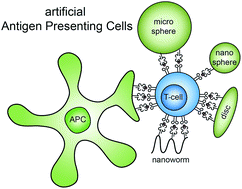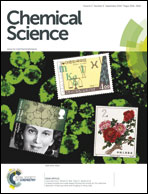The right touch: design of artificial antigen-presenting cells to stimulate the immune system
Abstract
With the ever expanding possibilities to build supramolecular structures, chemists are challenged to mimic nature including the construction of artificial cells or functions thereof. Within the field of immunology, effective immunotherapy critically depends on efficient production of antigen-specific cytotoxic T-cells. Herein lies an opportunity for chemists to design and synthesize so-called artificial antigen presenting cells (aAPCs) that can promote T-cell activation and their subsequent expansion. In this review we discuss the current status of aAPC development, also focusing on developments in nanoscience which might improve future designs. As synthetic mimics of natural antigen-presenting cells, aAPCs encompass three basic signals required for T-cell activation: MHC–antigen complexes, costimulatory molecules and soluble immune modulating compounds. Both spatial and temporal organization of these signals during aAPC/T-cell contact is important for efficient T-cell activation. We discuss how signals have been incorporated in several aAPC designs, but also how physical properties such as size and shape are essential for targeting the aAPCs to T-cell rich areas in vivo.

- This article is part of the themed collection: Chemical Biology

 Please wait while we load your content...
Please wait while we load your content...